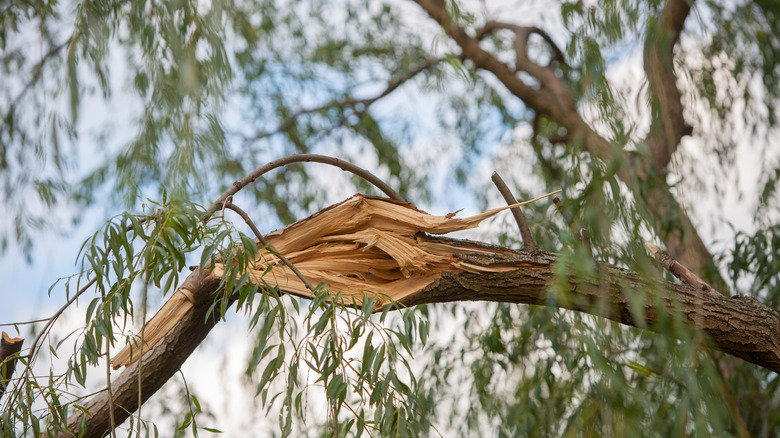Storms can create a lot of headaches for homeowners. Not only can they blow off roof shingles, flood yards, and rattle windows, but they can also wreak havoc on landscaping. This is especially true if you have trees on your property. A strong storm can break branches, split trunks, and even uproot trees, leading to pricey property damage and unsightly gaps in your landscape design. It’s important to take stock after a big storm and walk your property to make sure there are no weakened branches, broken limbs, or split trunks.
This can prevent future problems. A dangling tree branch can eventually snap at a later date and cause injury or damage property. Leaving a broken tree branch untreated can also put the tree at risk for disease or pests, putting its health in danger. Because of that, giving your landscaping a once-over is a must after a heavy rain.
What to look for when inspecting your trees after a storm

It’s important to walk your property after a storm to ensure that all the trees are intact. This is especially important if you have larger trees whose giant limbs can cause a lot of damage if they unexpectedly snap. When inspecting them, there are several issues to keep an eye out for. First, are any of them leaning? If they are, this can mean that the roots were weakened during the storm, and the tree is now unstable in the ground. This can eventually lead it to tip over and cause serious damage.
Second, are there any hanging or split branches? If these branches are still attached to the tree but are severely damaged, they will require immediate removal for two reasons. They can eventually fall and hurt unsuspecting people below, or the open wound could hurt the tree itself. The wound can attract pests, which can eventually lead to disease. Lastly, you should also look for any cracks or split trunks. If you spot a crack that is deep and exposes the wood behind the tree’s bark, the tree is susceptible to disease. Even worse, if you find a split trunk, the foundation of the tree has been compromised, and the whole thing could eventually topple over.
What to do when you find damage
If you find damage in your trees, there are several things you can do. If the damage is minimal or easy to fix, you can try to do it yourself. This usually pertains to split or dangling branches. If the limb is close to the ground and is relatively small, you can prune the tree yourself. However, if the branch is large or is so high off the ground that you need a large ladder, it is safer to leave it to the professionals.
When there is more substantial tree damage — such as a split trunk, a deep crack, or a leaning tree — it’s best to call an arborist or tree surgeon to fix your problem. These professionals have both the knowledge and tools to safely remove trees and branches and diagnose wounds. You can find a qualified arborist in your area using the Find An Arborist tool from the International Society of Arboriculture.